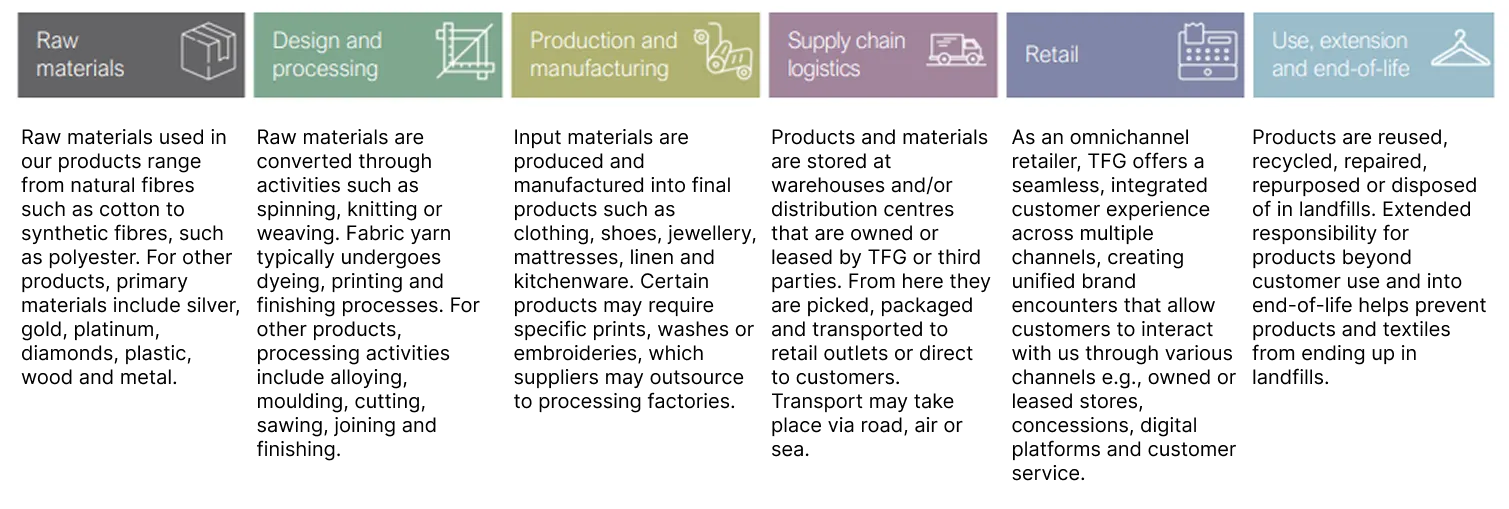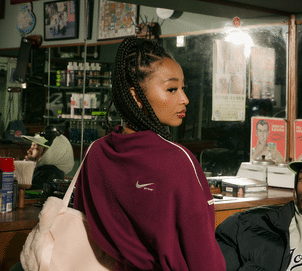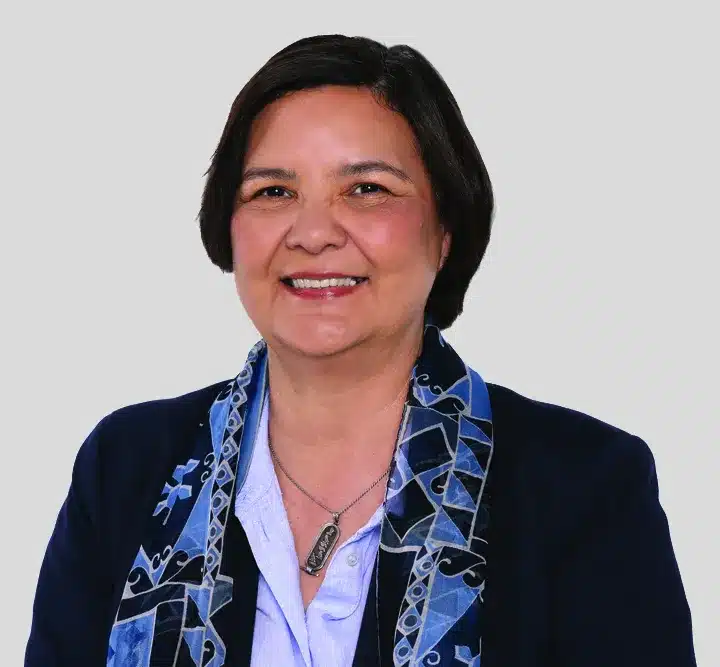Sustainability
Our Value Chain
Our retail-driven value chain spans from raw material extraction to product end-of-life, involving both owned operations and external suppliers upstream and downstream. Understanding this complexity is key to advancing sustainability and ethics at TFG and throughout our supply network.
Our business segments have different levels of control of the value chain components as illustrated.


Raw materials
Raw materials used in our products range from natural fibres such as cotton to synthetic fibres, such as polyester. For other products, primary materials include silver, gold, platinum, diamonds, plastic, wood and metal.
Design and processing
Raw materials are converted through activities such as spinning, knitting or weaving. Fabric yarn typically undergoes dyeing, printing and finishing processes. For other products, processing activities include alloying, moulding, cutting, sawing, joining and finishing.
Production and manufacturing
Input materials are produced and manufactured into final products such as clothing, shoes, jewellery, mattresses, linen and kitchenware. Certain products may require specific prints, washes or embroideries, which suppliers may outsource to processing factories.
Supply chain logistics
Products and materials are stored at warehouses and/or distribution centres that are owned or leased by TFG or third parties. From here they are picked, packaged and transported to retail outlets or direct to customers. Transport may take place via road, air or sea.
Retail
As an omnichannel retailer, TFG offers a seamless, integrated customer experience across multiple channels, creating unified brand encounters that allow customers to interact with us through various channels e.g., owned or leased stores, concessions, digital platforms and customer service.
Use, extension and end-of-life
Products are reused, recycled, repaired, repurposed or disposed of in landfills. Extended responsibility for products beyond customer use and into end-of-life helps prevent products and textiles from ending up in landfills.
Read more about our approach to ethical and responsible value chains in our Inspired Living report.






















